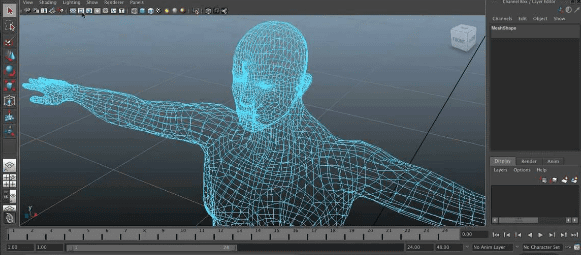Game development is the process of creating video games as software applications for computers, consoles, and other devices. There are many stages in the creation of any video game, and each one influences the one that follows it to some degree. Whether you are looking to develop a game by yourself or are going to ask for game co-development services, here is everything you should know so that you can avoid making some costly mistakes with your new gaming project.
Defining the Goal
For the development team, it is crucial to set a clear goal for the project and make sure that everyone on the team knows what that goal is. The goal can be simple or complicated. Whatever the goal, it should be achievable and not too vague so that developers can know when they are finished with their work. It is important to keep in mind that every step in this process affects all the following steps so making sure there is a clear understanding at the beginning will help reduce issues later in production.
Selecting the Genre
A game genre is the classification of a game into a particular category, such as a puzzle, strategy, or arcade. It has to do with the nature and purpose of the gameplay, not with what platform it’s on or who published it.
Developers should think about which genre best suits their project and how it will be used before they choose one. Several things need to be considered when selecting the right game genre for a developer’s project.
Firstly, developers need to consider how many genres are currently being represented in the gaming industry.
Secondly, developers need to consider if there is room for more projects in that specific genre.
Thirdly, developers should consider if any emerging trends in this specific genre would make this type of project worthwhile from an investment perspective.
Decide on Platforms
There are a lot of factors to consider when deciding on the platforms for your game, such as the number of players, their level of experience, and what type of game you’re creating. The platform can also influence how you design the content for your game.
Is it a single-player or multiplayer game? What is the gameplay like? What types of media will you use in your project? Will it be playable on a phone or TV? How many people do you want to play with? Do they need controllers (like an Xbox 360) or do they just need a mobile device? Are they playing competitively or cooperatively? Answering these questions will help guide you through the rest of the development process. For example, if your game has fast-paced combat that requires quick reflexes and skill, then using a controller may be better than using touch controls on a smartphone.
Creating an Outline
The next step is to create an outline for the game based on the storyline, player actions, and obstacles that need to be overcome. This is where you start thinking about what kind of gameplay elements will be needed for the game and how they will interact with each other as well as the player. You also start considering how much time it will take to create them and how much time it will take a player to complete them to successfully finish the game.
Design the Story & Characters
The story needs to be compelling and well-told, as this will keep players engaged in the game long enough to reach a high level of proficiency in the mechanics. The developers should design a storyline that is easy to follow and understand without too much complexity. It should also be designed with replay value in mind so that players can enjoy it over and over again while still feeling challenged each time they play it.
The characters are another key element of a story’s design. They need to have personalities and backgrounds that create realistic motivations for the player to root for them or against them, depending on which side they are playing in the game. These character traits should develop naturally from how the story unfolds, but there must be consistency across all interactions between them. Characters should also have distinctive visual qualities that help players identify with or stand out from one another based on their role in the narrative.
Working with The Art Team
Art for the game is usually done in Illustrator or Photoshop, but some people like to work in other programs such as Corel Draw and Manga Studio. The art team will create all assets for the game including characters, backgrounds, animations, and any other visual elements that are needed by the programmers to make the game come to life.
The first thing they do is create a style guide with examples of what they plan on making for the game. They’ll also talk about how many frames per second the animation should be, the level of detail required for each asset, the color palette, and anything else necessary to communicate their vision to everyone else. Next, they’ll start roughing out character sketches before deciding on which ones will be finalized.
Hiring Composers & Voice Talent
The composer is the person in charge of creating the music to go with your game. They can make or break your game, which is why they’re usually given a lot of power when it comes to what they want in terms of deadlines and how much money they will get paid for their work. The voice talent is the person who provides vocals for all the characters in your game. If you have any dialogue in your game at all, chances are you’ll need to hire voice talent. Hiring both composers and voice talent costs a significant amount of money because you must pay them per hour for whatever work they do for you.
Programmers, Designers, and Testers
Programmers are the coders that write code, then turn it into instructions for the computer to understand. Designers use this code and create a game environment that appeals to gamers and fits within the restrictions of the budget and time frame. Testers test different parts of the game to make sure everything is working properly, look for bugs or other glitches, then recommend changes to help improve gameplay.
Packaging, Publishing & Launch
In the final stages, you’ll need to prepare your game for submission to a digital distribution platform like Steam or Apple’s App Store. You’ll also want to start marketing your game, this means creating a website and social media accounts, writing a press release, making videos, and doing anything else that will help you get noticed. Finally, launch day arrives. You’ll have one last chance to fix any bugs before launching. Then it’s time to sit back and wait for the reviews.
Conclusion
Gaming is a fascinating field. It’s growing rapidly, and if you have a passion for it, there are numerous opportunities available to you. Whether you love gaming or game development, these insights will help clear some things up about how video games are made and what goes into making them a reality for players.
Bio:
Yuriy Denisyuk is Game Production Lead at Pingle Studio. He’s responsible for successfully
managing the Game Production pipeline. Yuriy is this lucky person who plays the best
games for work to keep up with trends and create new ones. He likes writing and reading Manga, fantasy, and professional literature in his free time.



































